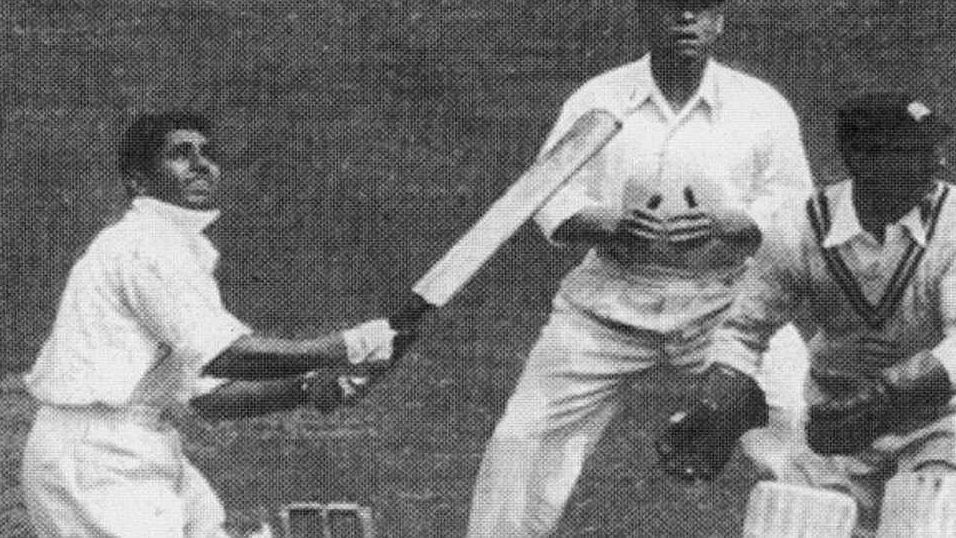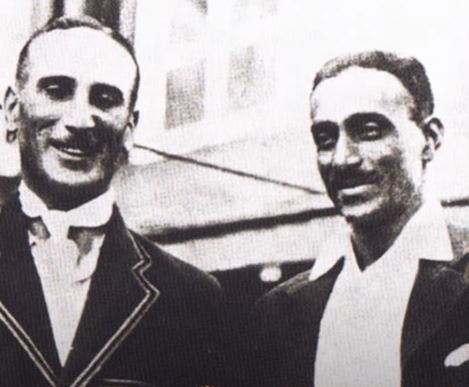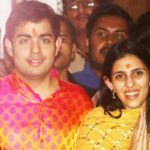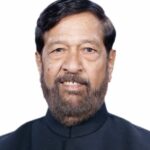Lala Amarnath Age, Wife, Children, Family, Biography & More
| Bio/Wiki | |
|---|---|
| Real name | Nanik Amarnath Bharadwaj [1]ESPN |
| Names earned | • Styled Lala Amarnath [2]ESPN • The Grand Old Man of Indian cricket [3]The Guardian |
| Nickname | Lala [4]The Guardian |
| Profession | Former Indian Cricketer (all-rounder) |
| Cricket | |
| International Debut | Test-15 December 1933 against England in Bombay (now Mumbai) ODI- N/A T20- N/A Note- There was no ODI and T20 at that time. |
| Last Match | Test- 12 December 1955 against Pakistan in Kolkata. ODIs- N/A T20- N/A Note- There was no ODI and T20 that time. |
| Domestic/State Team(s) | • Gujarat • Hindus • Maharaja of Patiala's eleven • Railways • Southern Punjab • Uttar Pradesh |
| Nature on field | Aggresive |
| Coach/Mentor | Roop Lal |
| Batting Style | Right-handed |
| Bowling Style | Right-arm medium |
| Favourite Shot | Cover Drive |
| Favourite Ball | Inswinger |
| Records (main ones) | • First Indian to score a Test century. • Only cricketer to dismiss Don Bradman hit-wicket. • First Indian allrounder to register a fifty and capture five wickets in an innings in the same Test match. • Fourth Indian Test captain after CK Nayudu, Maharaj Kumar of Vizianagaram, and MAK Pataudi. • First Indian test captain to lead the country in ten or more matches. • First cricketer to play for five states in the Ranji Trophy. • First Indian batsman to register centuries in each innings on English soil. • Sixth bowler in the world to capture four wickets for no run and the only Indian till date. • In 1976, his son, Surinder Amarnath, scored a century on his test debut against New Zealand. This is the only father-son duo to achieve this feat. |
| Awards, Honours, Achievements | • Honorary Life Membership of the MCC in 1960 • Padma Bhushan by the Government of India in 1991 • C K Nayudu Award for outstanding contribution to Indian Cricket, both on and off the field in 1994 |
| Personal Life | |
| Date of Birth | 11 September 1911 (Monday) |
| Birthplace | Gopipur, Kapurthala State, Punjab, India |
| Date of Death | 5 August 2000 |
| Place of Death | New Delhi, India |
| Age (at the time of death) | 88 Years |
| Death Cause | He died in a sleep. [5]Tehran Times |
| Zodiac Sign | Virgo |
| Signature |  |
| Nationality | Indian |
| Hometown | Kapurthala, Punjab |
| School | Randhir High School, Kapurthala |
| College/University | Aligarh Muslim University |
| Religion | Hinduism [6]Wikipedia |
| Controversy | During his tour of England in 1936, he witnessed some of the disappointing moments of his life when he was sent back home on disciplinary grounds by the team captain Maharaj kumar of Vizianagram popularly known as "Vizzy". Reportedly, when he was injured, Vizzy told him to pad up as the next batsman and didn't allow him to rest. However, he got the chance to bat during the close of play. Furious Lala came to the dressing room and muttered in Punjabi "I know what is transpiring.” After this incident, he was sent back home by the team manager Major Jack Brittain-Jones. He had to sit for 12 years long after that to play his 4th Test match. [7]Cricbuzz |
| Relationships & More | |
| Marital Status | Married |
| Marriage Date | 8 December 1938 |
| Family | |
| Wife/Spouse | Kailash Kumari |
| Children | Son- 3 • Mohinder Amarnath (International cricketer)  • Rajinder Amarnath (First-class cricketer)  • Surinder Amarnath (International cricketer)  Daughter- 2 • Kamala • Dolly |
| Favourite Things | |
| Cricketer | Don Bradman |
| Captain | D. R. Jardine |
| Cricket Ground | Race Course ground in Hyderabad |
Some Lesser Known Facts About Lala Amarnath
- Lala Amarnath was an Indian cricketer who played for India from 1933 to 1955. He is widely regarded as the first Test captain of Independent India and the Godfather of Indian cricket.
- His son, Mohinder Amarnath, was the man of the series in the 1983 World Cup.
- Amarnath spent his early days in pre-partition Lahore (now in Pakistan). His popularity echoed the border so much that he once revealed that
If I ever fought an election in Pakistan, I’d win!… I’m really proud of the great regard and respect the people there have for me.”
- During his childhood, he used to watch Britishers playing cricket on the ground. From there on, he also thought of playing cricket. So, he demanded a bat from his mother. The mother ordered the bat from outside the city as it was not available in Kapurthala.
- The first time he started playing cricket was with the SSS Club in Kapurthala. After his mother’s death, he was raised by his grandfather in Lahore who then sent him to Aligarh, where he started playing for his university team.
- Later, he was noticed by Frank Tarrant who worked as the cricket coach for Maharaja of Patiala. After his recommendation, Lala started playing for the Maharaja’s team. He recalled these days by saying
The Maharaja of Patiala (Bhupinder Singh) used to bring out many English professionals, and I regularly watched them in the nets. At home, I would practise my strokes before a mirror. I learnt very early how the best batsmen always used their feet.”
- In 1933, in the very first innings of his international career, he could manage to score only 38 runs. In the second innings, he scored 118 runs by playing a hook shot. He was also the top scorer in both innings. However, India lost that match against England in Bombay (now Mumbai) under the captaincy of CK Nayudu.
- After scoring a century, spectators came to the ground to acknowledge his innings. Women showered garlands on him. CK Nayudu was on the non-striker’s end witnessing that historic moment. After Lala stepped out of the stadium, the crowd got out of control to have a glimpse of their hero. But somehow, he managed to escape the crowd and board a train.
- It is also said that after his return from the successful England tour in 1933, a millionaire presented him with 800 Pound Sterling, while another gave him a car.
- During the 1947-48 Australian tour, he scored 144, 171, and an unbeaten 228, taking his tally of total runs to 1162 with an impressive average of 58.1 in the first-class match that happened just before the series. The double century came when India was three wickets down for no run. Impressed by his batting Don Bradman, the captain of Australia, remarked
Those who saw his innings (228 not out) against Victoria rate it among the best ever seen on the Melbourne Cricket Ground.”
However, he couldn’t manage to take that form forward, and he could score only 140 runs in five Test matches with the highest score of 46, but he managed to take 13 wickets; India lost the series. During that series, his eldest son, Surinder Amarnath, was born.
- The 1947-48 series was the first cricket series ever when a team board a flight to reach their touring country and Lala was not only a part of it but was also made the captain.
- Under his captaincy, India won its first Test match against England at Madras in 1952 and its first series victory against Pakistan later that year.
- Post-retirement in 1955, he served Indian cricket in various capacities. In the same year, he became the chairman of India’s selection committee. He was a fierce commentator who was known for his outspoken skills.
- He was known for his short temperament, and he would often get angry if a player committed a mistake multiple times. It is said that he slapped his own son Surinder Amarnath during a Ranji match for playing the wrong shot.
- He was credited for selecting Jasu Patel against Australia at Kanpur in 1959-60. His decision paid off, and Jasu Patel took 14 wickets in that match, and India won by 119 runs.
- Lala was equally good with the ball with an impressive stat of 45 wickets in 35 Test innings at an average of 32.91. His top bowling performance came against England in 1946 where he was very close to a hat-trick dismissing Len Hutton and Denis Compton of two successive balls. He took 5 wickets for 118 runs in 57 overs during that match. His bowling impressed Raymond Robertson-Glasgow the cricket writer so much that he once wrote
My chief memory is not of our own players, fine as they often were, but of Amarnath baffling the best England batsmen with his subtleties of swerve.”
- When Lala was asked about the best inning of his life he told that
Let me tell you, the finest innings I ever played was on a sticky wicket at Chepauk (Madras) on our way to Ceylon in 1945.’ Luckily, I was carrying the ACS Indian guide in my satchel, so could immediately locate the match: March ’45, the island-bound team versus the Madras Governor’s XI.
- He was also an excellent cook who could cook Mughlai and Continental food.
- He was a witty person on-field. During the 1946 tour of England, he was able to keep their six-hitter batsman Harold Gimblett quiet for long. Frustrated Gimblett asked him
“Don’t you ever bowl a half-volley?”
To which Lala quickly replied
“Oh yes, I bowled one in 1940.”
- In 2011, BCCI decided to institute an award dedicated to this legend for the best all-rounder in a Ranji Trophy and the best all-rounder in limited-over domestic competition.
References/Sources:
















